Muay Lopburi – From Legend to the Ring
Muay Lopburi [มวยลพบุรี] is the oldest Thai kickboxing style with 1,356 years of history. As its name suggests, Lopburi boxing originated in Lopburi, a province in the central region of Thailand at present. It is characterized by finesse and nimbleness of boxers and inspired by the epic Ramayana and movements of animals, resulting in a fascinating fighting technique. Development of Muay Lopburi According to legend, Muay Lopburi was developed in 675 by hermit Sukatanta of the Khao Samor Khon Martial Art School in Lopburi. The last student to have learned boxing from this school was King Ram Kamhaeng of the Sukhothai Kingdom (736 – 755). It was, however, not until 600 years later that this boxing style was truly established. Another king who practiced this boxing was King Khun Ngam Muang, who ruled the Phayao Kingdom from 1258 to 1298. Muay Lopburi was standardized and became a respected form of martial art as it entered the second era in 1656 – 1867 when King Narai the Great of the Ayutthaya Kingdom (1656 – 1688) took it under his patronage. It was at this point when rules, boxing rings, and boxing competitions were officially documented. Another king of Ayutthaya who had so much passion for boxing that he disguised himself as a common man to compete in boxing tournaments was King Sanphet VIII (1703 – 1708). Phra Prag Sam Yod, an ancient temple in Lopburi [cr. MThai] The third era, or the golden age of Muay Lopburi, was during the reign of King Rama V of Rattanakosin (1868). Passionate about boxing, His Majesty studied, learned, and regularly frequented boxing matches. In one competition he attended as a spectator, a rising star boxer named “Klueng Tosa-at” from Lopburi who was able to take down the most opponents, earned from his impressive act the noble title “Muen Mue Man Mud” (Precise Puncher) from His Majesty. In the reign of King Rama VI, emerged another skilled Lopburi boxer, Chan Buathong. Identity Muay Lopburi is as unique as it is enthralling to watch. At the very core of this boxing school lie three key elements: quick movement, straight punching, and tricks. Lopburi boxers must keep moving to distract their opponents and attack when opportunities arise. By the way, did you know that Lopburi is the city of monkey? Maybe, this is why Lopburi boxing is fast-paced and full of tricks to mimic the spirit animal of the city. The Lopburi precise and lightning fast punches, as well as the kicks, the knee and the elbow strikes, are all released in the forward direction in order to penetrate the opponents’ defenses. Each punch is never a miss. Muay Lopburi is known by another name as “Chalat Chok” (smart punching) or “Muay Kiao” in which boxers must be in constant movement whether they are attacking or defending. This requires a high level of tactics, wit, agility, and focus, and is in contrast to “Muay Lak” which is distinguishable by its calm and careful approach. Techniques and Training Start with the basic standing posture, known as the “Phra Kan Poed Lok” [พระกาฬเปิดโลก] meaning “the dark lord shatters the world.” Place one foot in front of the other, both fists facing up with the right fist extending forward at the chin level and the left fist at the chest level. Phra Kan Poed Lok [cr. ไม้มวยไทย] A basic Lopburi fist is a normal fist upturned with the thumb pressing on the index and the middle fingers, locking them in place. Other types of fists are, for example, the swan’s eye fist, characterized by the knuckle of index finger which sticks out. The leopard fist is formed by opening your palm and fold back only the fingers so that your fingertips touch the upper part of the palm. The Bengal tiger fist is basically when you make a claw with your hand, and the lion fist is similar to the swan’s eye fist, but instead of extending the index finger, do it with the middle finger. These fists share one common characteristics in which they are all upturned fists and fast, targeting the opponent’s chin or face. A one-fist attack is called “Choed Khao Phra Sumeru” [เชิดเขาพระสุเมรุ] (lifting Mount Meru) and a two-fist strike is called “Hanuman Tawai Waen” [หนุมานถวายแหวน] (Hanuman offering the ring). In order to throw speedy jabs and strikes, a boxer’s footwork must be equally flexible and fierce. Boxers can switch back and forth during the combat between the three main foot positions – the two-pit, the three-pit, and the one-pit. For the two-pit stance, make sure your feet are parallel and aligned with your shoulder, and then slightly bend your knees and put the weight equally on both feet. For the three-pit stance, start with the two-pit posture, and take one step backward with your right foot, but always keep the feet parallel and equally spread the weight on both of them. And lastly, for the one-pit stance, from the three-pit stance, lift the front knee and tense up the muscle and joints, and then lean forward slightly. The following is the sixteen boxing moves (known as “Mae Mai” [แม่ไม้] in Thai) of the Lopburi style, and as mentioned earlier, they fuse the movements of elephants and monkeys and the characters from Ramayana with martial art aesthetics, to create graceful and deadly moves. As you can see, the first five moves are called the elephant’s moves. And the next five moves are inspired by monkeys. [cr. Banchamek Gym] The remaining six moves involve the names of Ramayana characters and others. Wai Khru movements Before each combat, Thai boxers must perform the Wai Khru[ไหว้ครู] dance, or a salute dance to the boxing teachers. According to the Thai tradition, Wai Kru is a ceremony that is observed, not only by boxers, but also by Thai artists of all fields, including music, acting, and dancing. For boxing, the Wai Kru dance offers many psychological benefits for boxers and spectators alike. It serves as a reminder for both parties to respect their parents and boxing teachers. The dance evokes in the hearts of Thais the pride of Muay Thai which deserves to be cherished and preserved. The Thai traditional music and the elegant yet strong choreography are also a beautiful and dignified prelude to the performance of Thai national martial art. The Wai Kru dance of the Muay Lopburi’s school consists of 11 movements. The most striking and beautiful postures of this choreography are “Phra Rama Plaeng Sorn” [พระรามแผลงศร] (Rama shooting arrows) and “Narai Khwang Chak” [นารายณ์ขว้างจักร] (Vishu throwing discs). For the first movement, the left arm is fully extended forward and the left hand is clenched into a fist. The right hand picks up an imaginary arrow from the back and places it in the front and release it like shooting an arrow. The next step is to put the left hand on the waist and the right hand on the forehead as if you were looking for something far away. To synchronize with the hand movements, move the left foot forward and crouch down when picking up the arrow, and then straighten up a bit and crouch again when the arrow is released. This movement allows the boxer to move around the ring to observe the opponent and intimidate him. Phra Rama Plaeng Sorn [cr. มวยลพบุรี ส.ไตรสุทธิ /Muay Lopburi] The “Narai Khwang Chak” begins by placing the left fist on the left knee. Extend the right arm up in the sky while the right hand is up clenched into a fist except the index finger. Then move the right hand forward like throwing a disc. For the feet, before throwing the disc, raise the left foot, and put it down as you are throwing the disc. This dance is used to portray the beauty of the martial art and to intimidate the opponent as well. As one can see, this is a highly detailed and exquisite dance compared to those of other boxing schools, for example the four-movement dance of Muay Chaiya, and the five-movement dances of Muay Korat and Muay Tha Sao. Outfit Another distinctive feature of Muay Lop Buri is the outfit. Lopburi boxers will wrap their hands up to the half of their lower arms and their ankles with calico fabric or yarn to prevent injuries, wear three-quarter pants, and wrap phakaoma cloth in a triangular shape to protect the genitals. The boxers may also carry amulets with them on the ring. These amulets are the same kinds used by ancient fighters and warriors according to the Pichai Songkhram texts (the art of war), such as an auspicious garland (Mongkhon) [มงคล], a sacred napkin (Prajiad) [ประเจียด], a triangular amulet (Phisamorn) [พิสมร], a holy armband (Pirod) [พิรอด], a piece of yantra cloth, a talisman, and a Buddha amulet. ——————————– Muay Lopburi is a truly fascinating boxing style, and luckily it is still thriving. From 1945 to today, Muay Lopburi is living its forth era and witnessing many talented Lopburi style boxers rise to fame. They harbor with them the strength to reinforce Thailand’s leadership of boxing on the global stage, the inspiration for young boxers, and the hope of keeping Lopburi boxing alive. Sources: https://www.youtube.com/watch?v=umc_8C_YXVU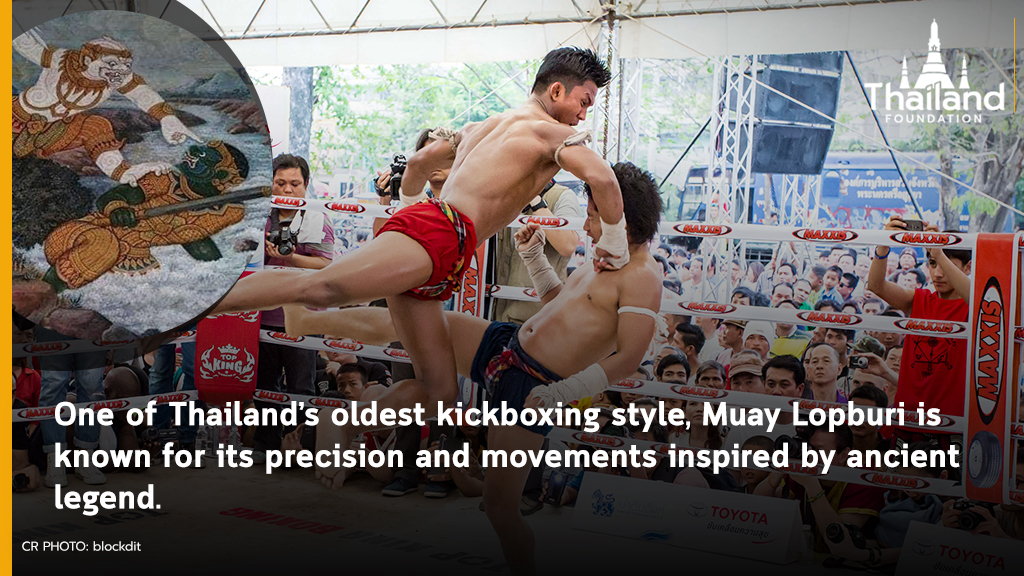
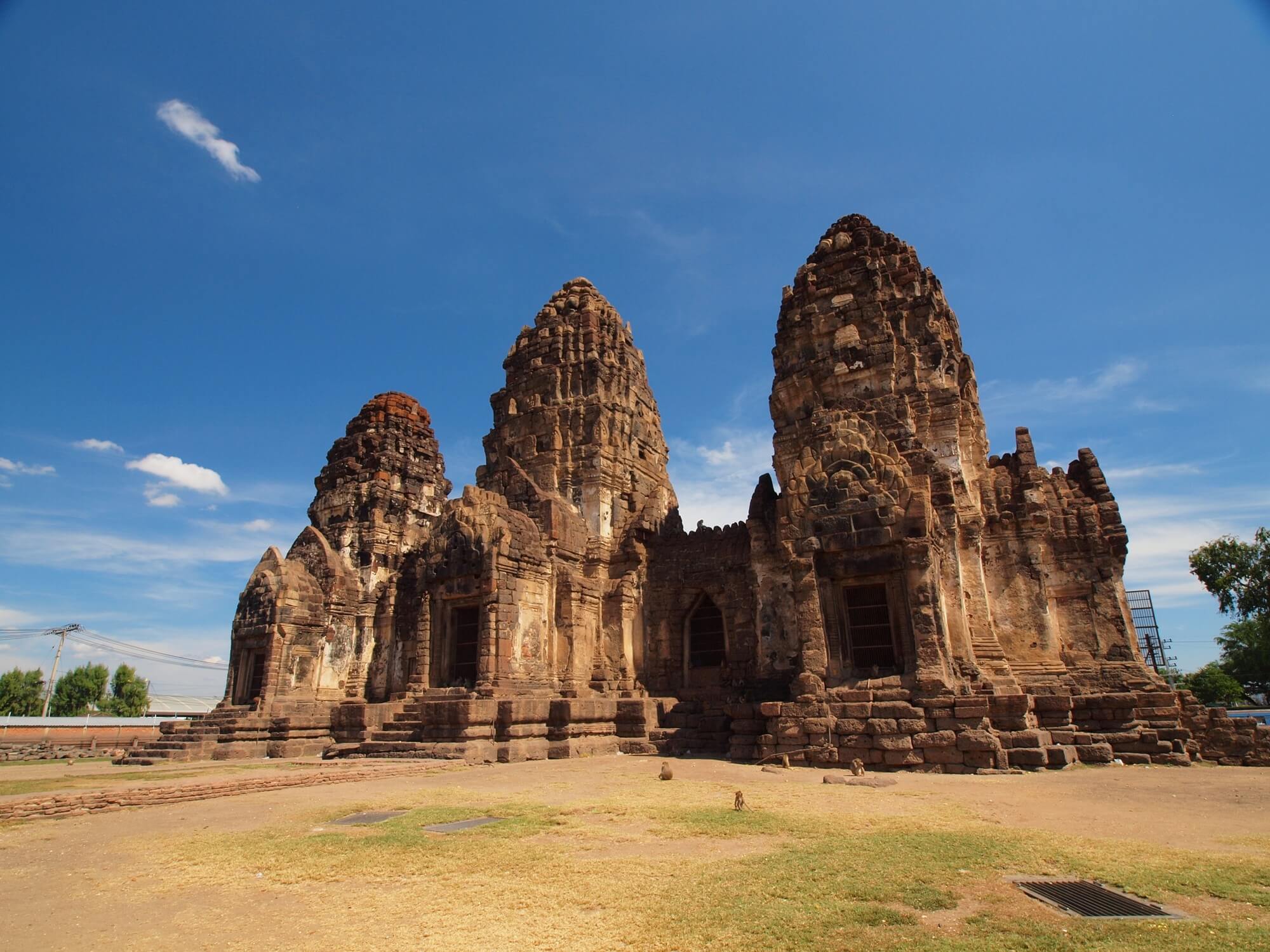
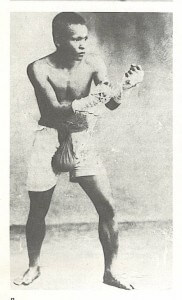

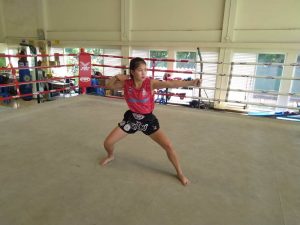
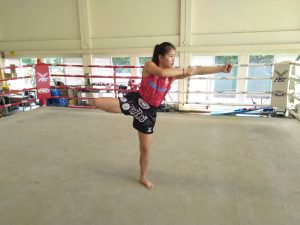
Author: Soonyata Mianlamai
4 Feb 2022


